What is SSH
SSH – also known as “Secure Socket Shell“, is a protocol that provides users with a secure way to access a remote Linux server. “SSH” is used by anyone who needs to securely control a computer remotely, as well as system and network administrators. “Secure Shell” (SSH) provides public key and password authentication, as well as encrypted communication between two computers connected via the Internet. The software consists of an SSH server running on the VDS and a client running on the user’s end. The software provides all the necessary functionality for working with a Linux VDS server, from remote access, file transfer and ending with TCP port redirection. It is the de facto standard for remote interaction with Linux servers. The SSH server and client are always included in a bootable Linux installation. It remains only to connect remotely.
Connecting to the server via SSH from Windows
One of the more commonly used methods is to connect via PuTTY.
What is PuTTY
PuTTY is an SSH client available for Windows and available on Windows computers with MCECS support. In addition, it is freely available on the Internet and can be downloaded for use on your personal computer from: http://www.chiark.greenend.org.uk/~sgtatham/putty/
Launch PuTTY and a window will appear, i.e. the program itself. It looks like the screenshot below.
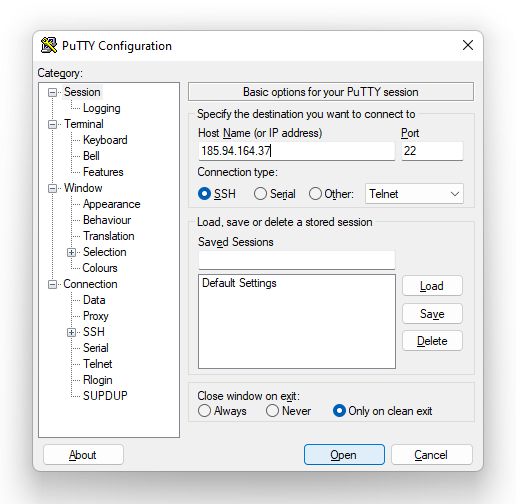
To connect to the server:
- Enter the IP of the server you want to connect to.
- Click the Open button.
- If this is your first time trying to connect to this host, PuTTY will warn you that it cannot guarantee that the computer you are connecting to, is who it claims to be. Click Yes to store the key in the PuTTY cache.
- Enter your login and password. When ordering a server from us, you get access to the root superuser. Accordingly, you must specify the root login and he’s password, which is located in the “Instruction” section in your account.
Important!!! Do not be confused, when entering a password, asterisks or dots indicating the password are not visible!
Connecting to the server via SSH protocol from Windows, Linux and macOS with a built-in SSH client
To connect from Windows, Linux or macOS we must open:
- CMD (command prompt in Windows)
- Or terminal in Linux OS and macOS.
Then, enter the following command, accept the conditions, write “yes” and press Enter.
ssh [email protected]
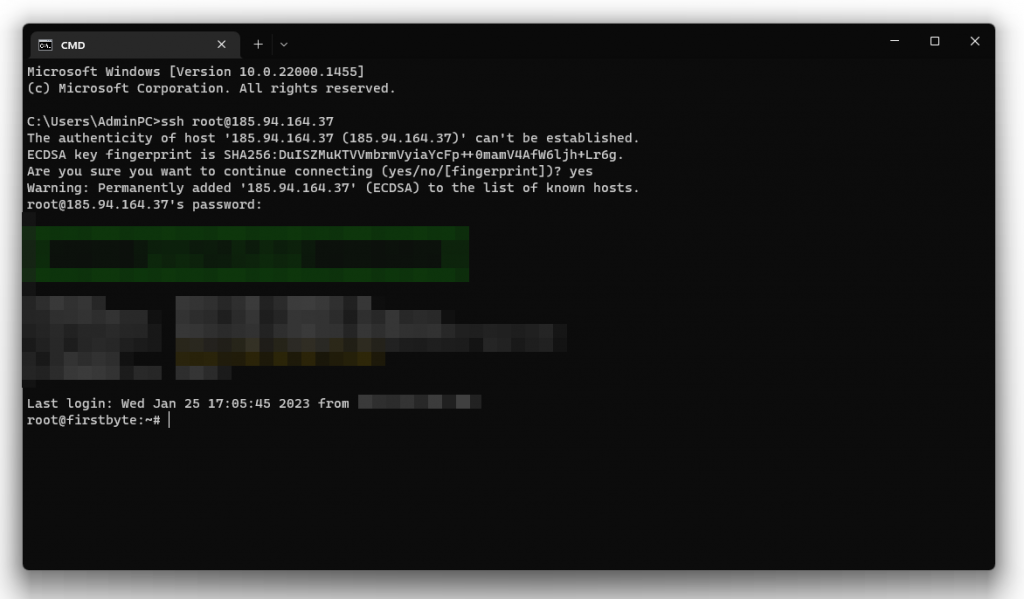
By default, the SSH port is always 22 and CMD also determines it itself.
After we wrote “yes”, press Enter and continue, specify the password, press Enter again and enter the server.
Connecting to the server via SSH protocol from Windows, Linux and macOS with Termius
What is Termius
Termius — is a great free SSH client with which you can easily manage all your servers. You connect directly to the server in the normal way (ssh root@ipaddress) or you can add them to “Termius” to favourites and easily connect to each one in the future with just one click.
Its advantage is availability on all systems: Windows, macOS, Linux, iOS and Android, and for most of them there is a free version. The paid version is pretty good too, but not required. For regular use, the free version is perfect.
Step one. We have to download and install “Termius”.
You can download from the link: https://www.termius.com/download
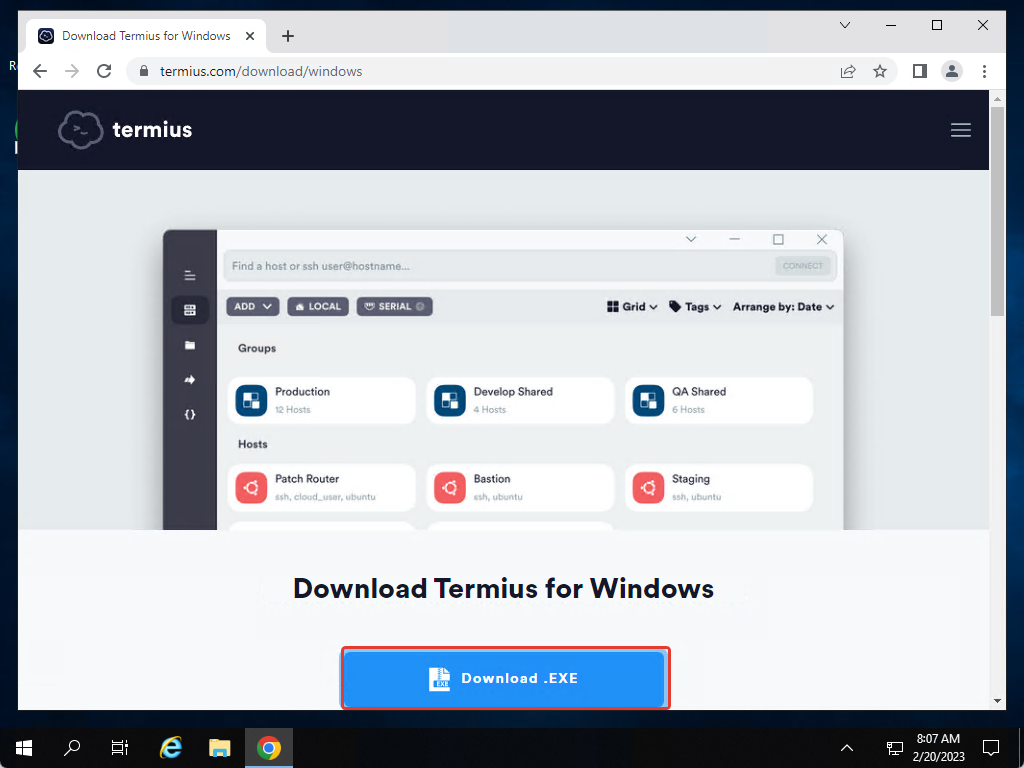
After we have downloaded and launched “Termius” it will be automatically installed.
Now you need to create an account as it is required. Specify the data and click on “Singup with email”
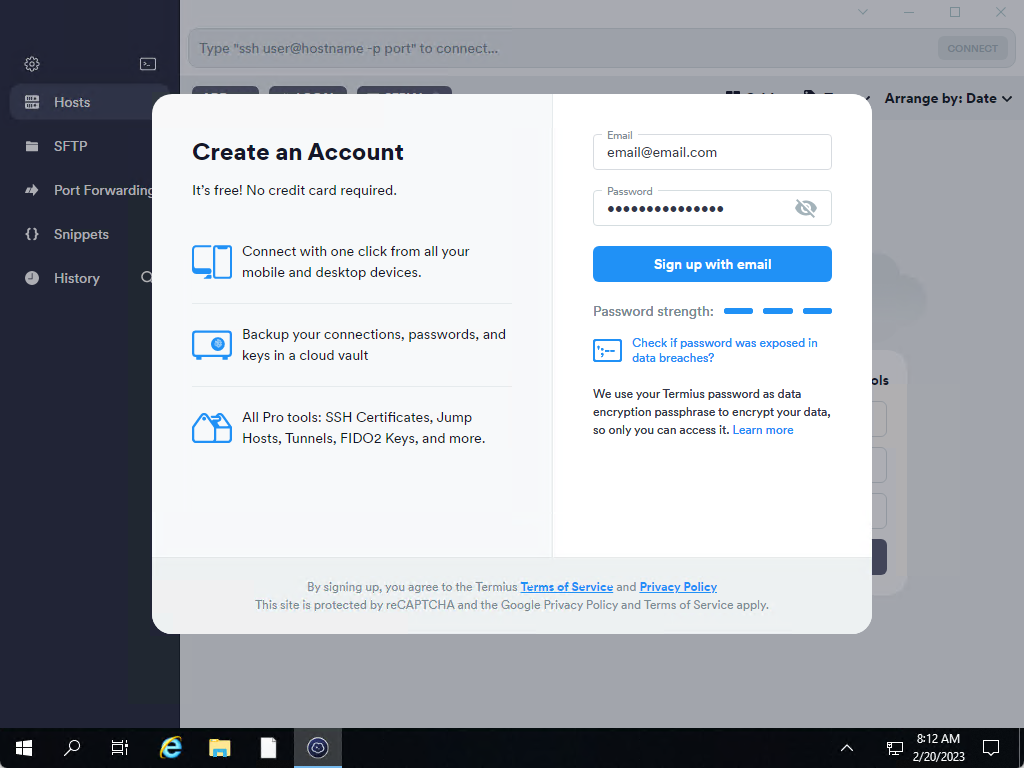
After registration, in the initial page, specify the IP, then click on the “Create host” button

On the new page, we specify:
The name of the server, so that it is easy to recognize which service is in question – if you have several of them.
Server IP address.
Port is 22 by default.
Login – in our case – “root”.
Password.
Click on the checkbox and save.

After that, double-click on the config that you saved, then click “Add and continue”
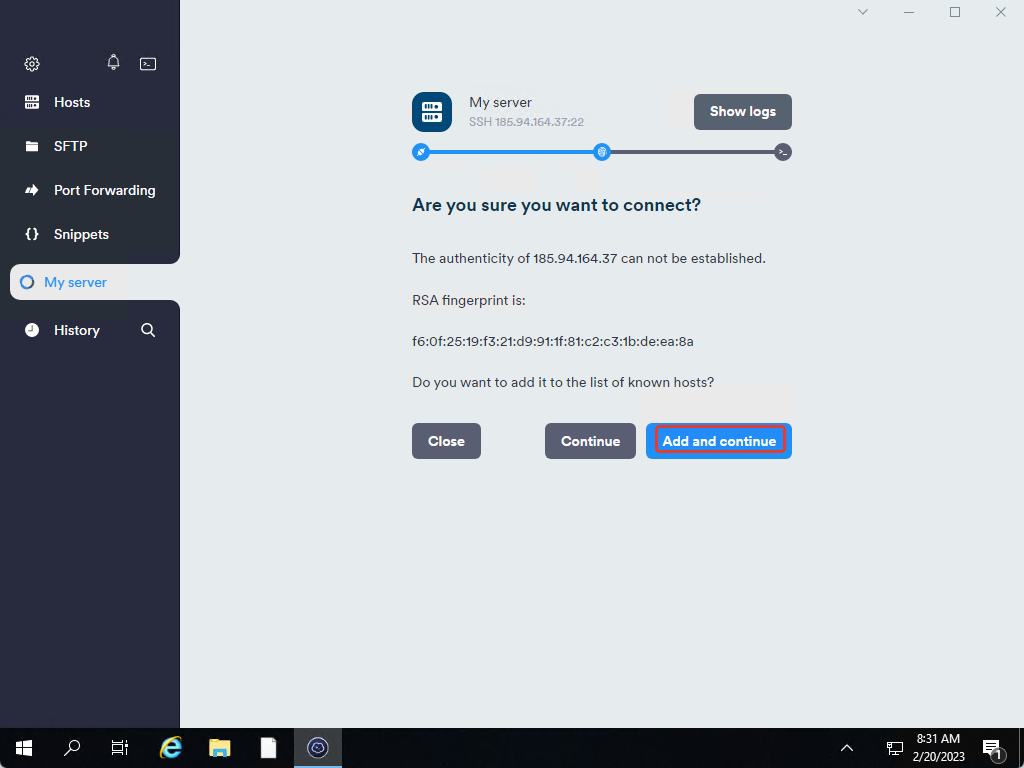
We have connected to the server and we can start working now.
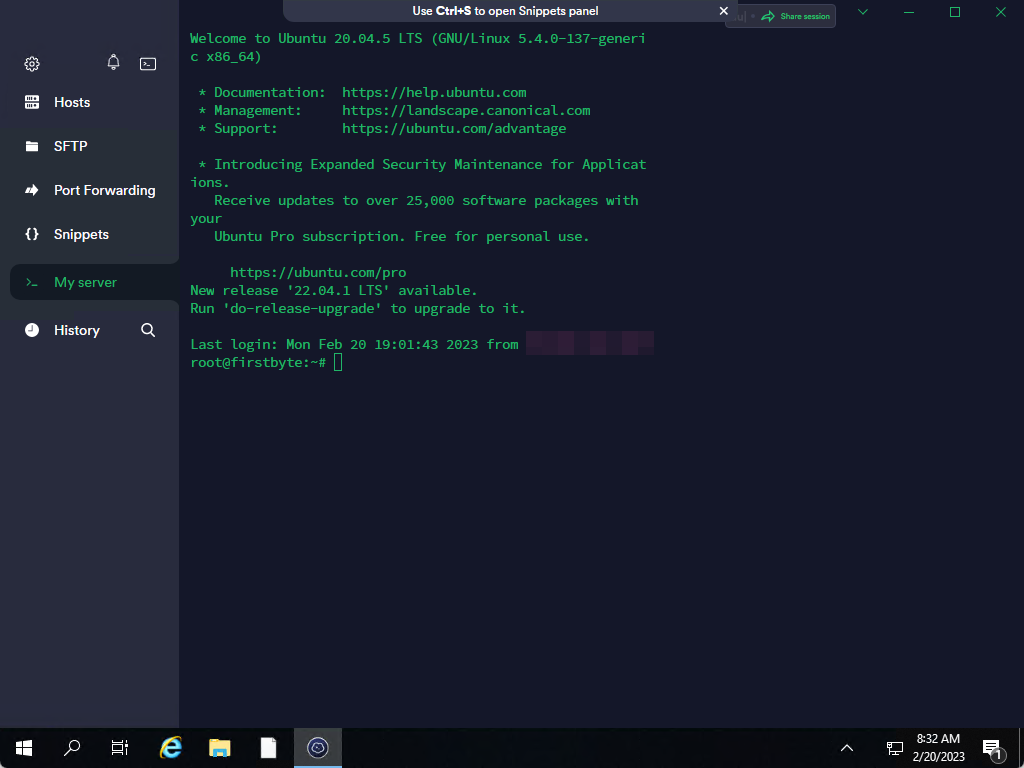
A big advantage of this SSH client is the built-in SFTP client. You will not need to use WinSCP, FileZilla or other software in this case to access server files.


